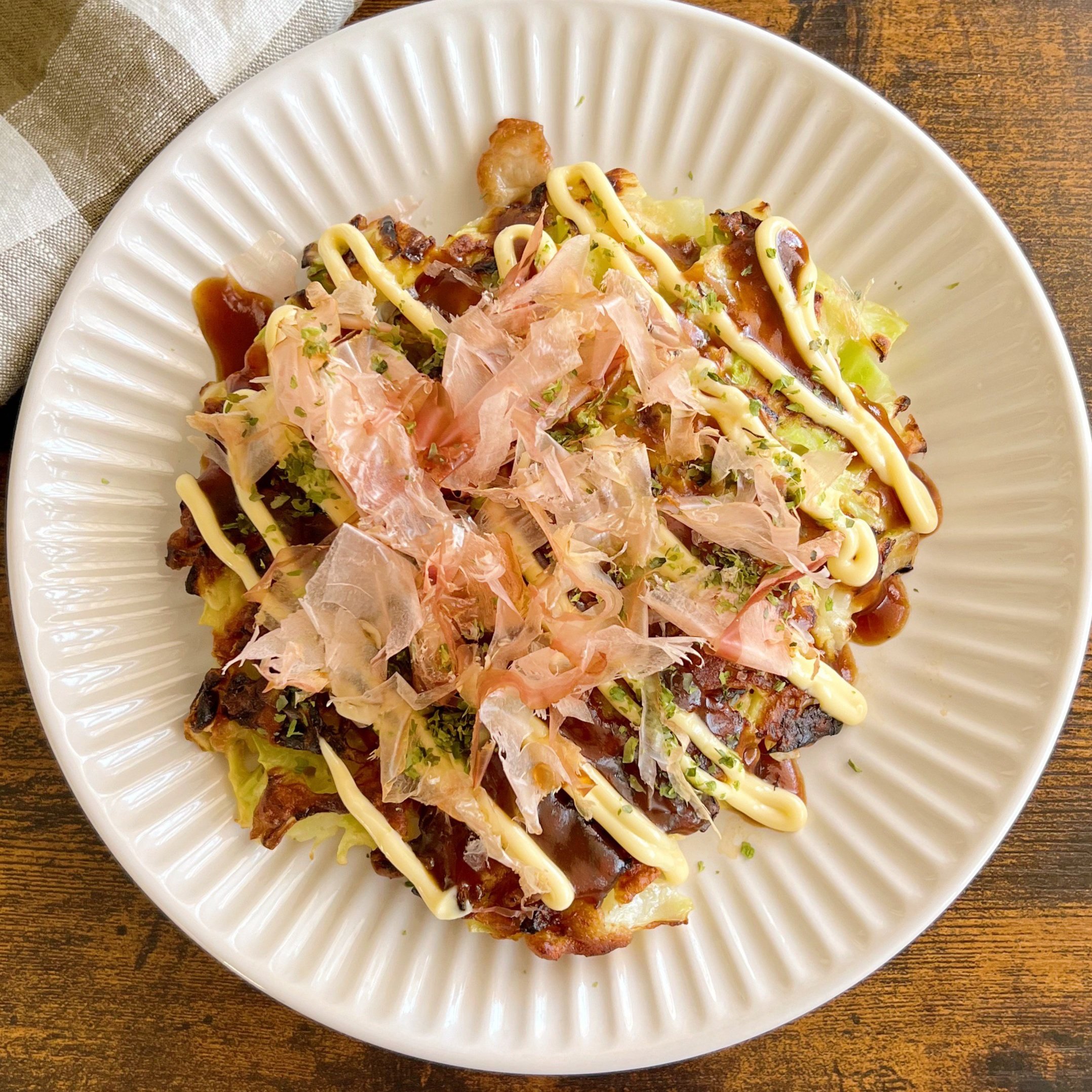Okonomiyaki (Osaka Style)
Scrumptious Japanese Pancakes for All Occasions
Japanese cuisine is renowned for its diverse range of flavors and innovative dishes, and one such delight that has captured the hearts of food enthusiasts worldwide is Okonomiyaki. This savory pancake, often referred to as "Japanese pizza" or "Japanese pancake," is a delightful combination of textures and flavors that make it a perfect dish for any meal of the day. Let’s explore the art of crafting Okonomiyaki with a simple and customizable recipe.
RECIPE
Servings: 6-7 pcs
Time: 30-40 min
Ingredients:
1/2 pc cabbage
1/2 cup flour
1 pack dashi powder
3-4 oz nagaimo
2 pcs egg
2-3 pcs scallion 1
6-18 pcs thin sliced pork
Instructions:
To begin, grate the Nagaimo, chop the cabbage, and finely slice the scallions.
In a mixing bowl, combine the grated Nagaimo and eggs. Once well mixed, gradually add the flour and Dashi powder, blending until a smooth batter forms.
Add the chopped cabbage and scallions to the batter, ensuring an even distribution throughout.
Heat a large non-stick pan or a griddle over medium heat. Once hot, ladle a portion of the batter onto the pan to form a pancake. Top the pancake with 2-3 thin slices of pork, covering it with a lid to lock in the flavors.
Allow the Okonomiyaki to cook for approximately 4-5 minutes on each side.
After flipping the pancake and cooking it for another 4-5 minutes, drizzle Okonomi sauce, a tangy and savory condiment, over the pancake, adding a touch of mayonnaise.
To add a visual and flavorful flourish, sprinkle Katsuobushi, dried and smoked bonito flakes, and lastly, garnish with a sprinkle of Aonori seaweed, lending a subtle hint of sea-inspired essence.
The origins of Okonomiyaki: It can be traced back centuries ago to Japan's ancient history. While the precise date of its inception remains uncertain, some historians believe that the concept of savory pancakes emerged during the Yayoi period. During this era, rice flour-based dishes were common, and the practice of grilling ingredients on flat stones or iron plates was prevalent.
The Edo Period (1603-1868) brought significant developments in Japanese cuisine, leading to the emergence of a pancake-like dish called "Funoyaki." Funoyaki consisted of batter mixed with some ingredients which were cooked on a griddle. This dish marked an early manifestation of the concept that would eventually evolve into Okonomiyaki.
The real turning point in Okonomiyaki's history came during the post-World War II era, particularly in the cities of Osaka and Hiroshima. As Japan sought to rebuild its economy, a wave of street food culture began to thrive, offering affordable and delicious treats to the masses.
In the 1940s, the dish was known as "Issen Yoshoku" in Osaka, literally translating to "one-sen Western food." It earned this name due to its low cost, typically selling for one sen (a small Japanese coin). The dish primarily featured ingredients like cabbage, flour, and water, reflecting the scarcity of resources during those times.
As Okonomiyaki gained popularity, two distinct regional styles emerged: the Osaka style and the Hiroshima style.
Osaka Style: It often referred to as "Kansai style," is characterized by mixing all the ingredients together into a batter before cooking. The result is a harmonious blend of flavors, with the cabbage acting as the primary filler, making it a lighter and more pancake-like version.
Hiroshima Style: On the other hand, the Hiroshima style is a layered approach. Instead of mixing the ingredients, they are placed separately in layers on the griddle. This style typically includes yakisoba noodles in addition to the cabbage and meat, creating a heartier and more substantial dish.
Since I grew up close to Hiroshima, my family always made Hiroshima style Okonomiyaki. My parents used to bring out a "Hot Plate," which is a portable griddle, on the table. They poured the batter, layered the cabbage, meat, and noodles, and beautifully flipped it to create a perfectly cooked Okonomiyaki. As I grew up and discovered Osaka style Okonomiyaki, I started liking it more because of the easy process of mixing all the ingredients together and just cooking.
Try this Osaka style Okonomiyaki. It's easier to make than you think!



















